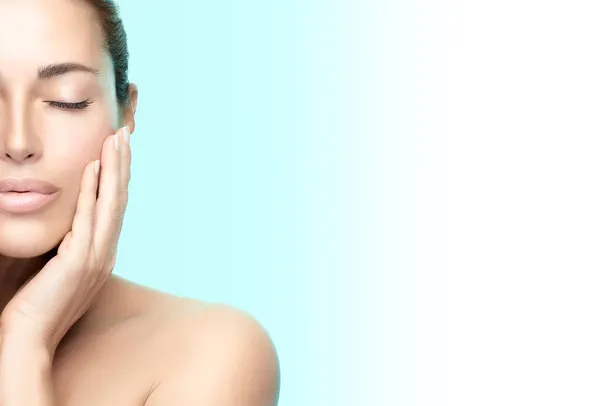In the quest for healthy, beautiful hair, split ends often emerge as a common adversary. These pesky hair woes can detract from the overall appearance of our locks, leaving them looking dull and unkempt. Enter split-end trimmers—a promising solution that claims to snip away split ends without sacrificing length. But are split-end trimmers truly worth the hype? We turned to a seasoned hairstylist to uncover the truth behind these innovative tools.
Understanding Split Ends:
Understanding split ends is essential for anyone striving for healthy, vibrant hair. These common hair woes occur when the protective outer layer of the hair shaft, known as the cuticle, becomes compromised, leading to the splitting of the hair into two or more strands. The cuticle acts as a shield, protecting the inner layers of the hair from damage and moisture loss. However, when the cuticle is damaged or weakened, it can no longer perform its protective function effectively, leaving the hair vulnerable to split ends.
Split ends can manifest in various forms, ranging from minor fraying to more severe splitting along the length of the hair shaft. The severity of split ends can depend on several factors, including the extent of damage to the cuticle and the overall health of the hair. While split ends may seem like a cosmetic concern, they can have a significant impact on the health and appearance of our hair.
Several factors contribute to the development of split ends, with heat styling ranking among the most common culprits. Excessive heat from tools such as flat irons, curling wands, and blow dryers can damage the cuticle, leading to the formation of split ends over time. Chemical treatments, including bleaching, coloring, and perming, can also weaken the hair shaft and increase the likelihood of split ends.
Environmental stressors, such as exposure to harsh weather conditions, UV radiation, and pollution, can further exacerbate split ends by stripping away the hair’s natural oils and moisture. Additionally, mechanical damage from brushing or combing hair, especially when wet or tangled, can cause the hair to break and split.
Preventing split ends requires a multifaceted approach that addresses both external and internal factors. Using heat protectant products before heat styling, avoiding excessive manipulation and friction when styling or brushing hair, and protecting hair from environmental damage are essential preventive measures. Additionally, adopting a hair care routine that includes regular trims, deep conditioning treatments, and nourishing hair masks can help maintain the health and integrity of the hair, reducing the likelihood of split ends.
The Dilemma of Split Ends:
The dilemma of split ends extends beyond mere aesthetics, as these seemingly minor hair issues can have far-reaching consequences for the overall health and appearance of our locks. While split ends may initially appear as a minor inconvenience, their unchecked progression can lead to significant damage and compromise the integrity of our hair.
Left untreated, split ends have a tendency to propagate further up the hair shaft, exacerbating the problem and increasing the risk of breakage. As split ends travel upwards, they weaken the hair shaft and create opportunities for additional breakage and damage. This can result in a vicious cycle of continual hair breakage and loss, undermining our efforts to maintain healthy, lustrous locks.
Moreover, split ends can have a detrimental impact on the length and thickness of our hair. As the damaged ends fray and split, they cause the hair to appear frizzy, dull, and unkempt. This not only detracts from the overall appearance of our hair but also makes it more challenging to achieve the desired length and volume. Despite our best efforts to nurture and care for our hair, split ends can thwart our aspirations for a sleek, polished look.
Addressing the dilemma of split ends requires proactive measures to prevent their occurrence and mitigate their effects. Regular trims are essential for removing split ends and preventing their progression. By trimming the damaged ends, we can maintain the health and integrity of our hair, promoting growth and reducing the likelihood of further breakage.
In addition to regular trims, adopting a comprehensive hair care routine can help prevent split ends and promote overall hair health. This includes using gentle hair care products, minimizing heat styling and chemical treatments, and incorporating nourishing treatments such as deep conditioning masks and hair oils. By nourishing and protecting our hair from damage, we can minimize the risk of split ends and maintain a sleek, polished appearance.
Enter Split-End Trimmers:
Enter split-end trimmers, the latest innovation poised to revolutionize the battle against split ends. These cutting-edge devices offer a promising solution to the age-old dilemma of split ends, providing a targeted approach to hair care that addresses the root cause of the problem. Designed to identify and remove split ends with precision, split-end trimmers offer a non-invasive alternative to traditional trimming methods, allowing individuals to maintain the length of their hair while effectively managing split ends.
The technology behind split-end trimmers is sophisticated yet simple in its execution. These devices utilize advanced sensors and mechanisms to detect and isolate split ends along the length of the hair shaft. Once identified, the trimmer’s precision blades swiftly and precisely snip away the damaged ends, leaving behind smooth, healthy-looking strands.
One of the key advantages of split-end trimmers is their ability to target and remove split ends selectively, without sacrificing the overall length of the hair. Unlike traditional trimming methods, which may involve cutting large sections of hair to address split ends, split-end trimmers allow for precise and targeted treatment, ensuring that only damaged ends are removed while preserving the rest of the hair.
Furthermore, split-end trimmers offer convenience and ease of use, making them accessible to individuals seeking an effective solution to split ends. These devices can be used in the comfort of home, eliminating the need for frequent salon visits and saving both time and money in the long run. With regular use, split-end trimmers can help individuals maintain healthier, more resilient hair with fewer split ends, promoting overall hair health and vitality.
While split-end trimmers hold great promise as a solution to split ends, it’s essential to approach them with realistic expectations. While they can effectively manage split ends and improve the appearance of the hair, they may not entirely eliminate the need for regular trims by a professional hairstylist. Additionally, proper hair care practices, such as minimizing heat styling and using nourishing hair treatments, are essential for preventing the recurrence of split ends and maintaining the health of the hair.
Insights from a Hairstylist:
Insights from a seasoned hairstylist shed light on the effectiveness and practicality of split-end trimmers in the pursuit of healthy, beautiful hair. With their wealth of experience and expertise, hairstylists offer valuable perspectives on the latest innovations in hair care, including split-end trimmers.
According to our expert hairstylist, split-end trimmers can indeed be a valuable tool for individuals seeking to maintain the health and integrity of their hair between regular salon visits. These devices provide a convenient and accessible solution for managing split ends, allowing individuals to address hair concerns in the comfort of their own homes.
The hairstylist highlights the versatility of split-end trimmers, emphasizing their ability to complement traditional salon treatments and maintenance routines. While regular trims by a professional hairstylist remain essential for overall hair health, split-end trimmers offer an additional layer of support, helping individuals to prolong the time between salon visits and keep their hair looking its best.
Moreover, split-end trimmers empower individuals to take proactive measures in caring for their hair on a day-to-day basis. By incorporating split-end trimmers into their hair care routine, individuals can address split ends promptly and prevent them from worsening over time. This proactive approach to split end management can contribute to healthier, more resilient hair in the long run.
However, our hairstylist also underscores the importance of using split-end trimmers correctly to achieve optimal results. Proper technique, including ensuring the hair is clean and dry before use and following the manufacturer’s instructions, is crucial for maximizing the effectiveness of split-end trimmers. Additionally, while split-end trimmers can help manage split ends, they may not entirely replace the need for professional trims, especially for individuals with extensive damage or specific hair concerns.
split-end trimmers offer a promising solution for addressing split ends and maintaining the health of our hair. While they may not entirely replace the need for professional trims, they can serve as a valuable tool for in-between maintenance. By understanding how split-end trimmers work and incorporating them into a comprehensive hair care routine, individuals can enjoy healthier, more resilient hair with fewer split ends.










